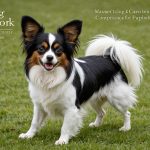Identifying Separation Anxiety in Adopted Greyhounds: Key Signs to Watch For
Understanding Separation Anxiety in Dogs
Separation anxiety is a common issue that can affect any breed of dog, but it is particularly prevalent in adopted greyhounds due to their sensitive and social nature. To help you identify and address this issue, it's crucial to understand what separation anxiety is and how it manifests.
Separation anxiety in dogs is characterized by distressing behaviors that occur when the dog is left alone or separated from its primary caregivers. This anxiety can stem from various factors, including the dog's past experiences, lack of socialization, or even genetic predispositions.
A voir aussi : Identifying Heat Exhaustion Symptoms in Maine Coon Cats During a UK Heatwave: A Comprehensive Guide
Signs of Separation Anxiety in Greyhounds
Identifying separation anxiety in your greyhound involves paying close attention to several key signs and behaviors. Here are some of the most common indicators:
Destructive Behavior
When left alone, dogs with separation anxiety may engage in destructive behaviors such as chewing furniture, digging, or destroying household items. This is often a sign of the dog's attempt to cope with the stress and anxiety of being alone.
Lire également : Empowering Conservation: Ways to Safeguard the Dartford Warbler”s Habitat in the UK
Unwanted Toileting
Accidents in the house, even if your dog is otherwise well-trained, can be a sign of separation anxiety. The stress of being left alone can cause your dog to lose control of its bladder or bowels.
Barking and Howling
Excessive barking or howling when you leave the house is another clear indicator of separation anxiety. This vocalization is the dog's way of expressing its distress and seeking attention.
Pacing and Restlessness
Dogs with separation anxiety may pace back and forth, seemingly unable to settle down when left alone. This restlessness is a physical manifestation of their mental distress.
Escaping
In severe cases, dogs might attempt to escape from the house or yard, which can be dangerous and lead to injuries.
Detailed List of Signs
Here is a more detailed list of signs to watch for:
- Destructive Behavior: Chewing furniture, shoes, or other household items.
- Unwanted Toileting: Accidents in the house despite being well-trained.
- Barking and Howling: Excessive vocalization when you leave the house.
- Pacing and Restlessness: Continuous pacing or inability to settle down.
- Escaping: Attempts to leave the house or yard.
- Self-Soothing Behaviors: Excessive licking, pawing, or other self-soothing actions.
- Following You Everywhere: Clinginess and a reluctance to let you out of their sight.
- Changes in Appetite: Reduced appetite or changes in eating habits when left alone.
- Changes in Sleep Patterns: Increased sleeping or restlessness when you are not home.
Understanding the Causes of Separation Anxiety
To effectively address separation anxiety, it's important to understand its underlying causes. Here are some common reasons why your greyhound might be experiencing this issue:
Past Experiences
Greyhounds, especially those adopted from racing backgrounds, may have experienced significant stress and isolation in their past. These experiences can contribute to the development of separation anxiety.
Lack of Socialization
Dogs that are not adequately socialized may find it difficult to cope with being alone. Socialization involves exposing your dog to various environments, people, and other animals to help them become more confident and calm in new situations.
Genetic Predispositions
Some breeds, including greyhounds, may be more prone to anxiety due to their genetic makeup.
Table: Comparing Separation Anxiety with Other Behavioral Issues
| Behavioral Issue | Separation Anxiety | Fear Aggression | Dominance-Based Aggression |
|---|---|---|---|
| Triggers | Leaving the dog alone | Fearful situations | Perceived threats to dominance |
| Symptoms | Destructive behavior, unwanted toileting, barking | Growling, biting, defensive posturing | Assertive body language, aggression towards others |
| Causes | Past experiences, lack of socialization, genetic predispositions | Fear, anxiety, past trauma | Perceived hierarchy, lack of training |
| Treatment | Systematic desensitization, training sessions, providing a safe space | Training, building trust, addressing underlying fears | Establishing clear boundaries, assertive training |
Addressing Separation Anxiety in Greyhounds
Addressing separation anxiety requires a combination of patience, consistent training, and creating a safe and comforting environment for your dog.
Systematic Desensitization
This technique involves gradually exposing your dog to the stimuli that trigger the anxiety (e.g., leaving the house) while providing positive reinforcement to help the dog associate these events with calmness rather than stress. Here’s a step-by-step approach:
- Start with Small Steps: Begin by leaving the room for short periods and returning before your dog becomes anxious.
- Gradually Increase Time: Increase the duration of your absence over time, always returning before the dog becomes distressed.
- Provide Positive Reinforcement: Reward your dog with treats and praise when they remain calm during your absence.
Training Sessions
Regular training sessions can help your dog feel more secure and reduce anxiety. Here are some tips:
- Use Reward-Based Training: Focus on positive reinforcement techniques to encourage good behavior.
- Include Calming Exercises: Teach your dog calming exercises such as "sit," "stay," and "relax" to help them manage stress.
- Desensitize Departure Cues: Dogs often associate certain actions (like putting on your coat or grabbing your keys) with your departure. Desensitize these cues by performing them randomly without leaving the house.
Providing a Safe Space
Creating a safe and comfortable space for your dog can help reduce their anxiety when you are not home.
- Designate a Quiet Area: Choose a quiet room or area where your dog can retreat when feeling anxious.
- Provide Comforting Items: Leave an article of clothing with your scent, such as a t-shirt, for your dog to snuggle up with.
- Keep Your Dog Engaged: Leave interactive toys filled with treats to keep your dog occupied and engaged.
Practical Advice and Quotes
Here are some practical tips and quotes from experts to help you manage separation anxiety in your greyhound:
Consistency is Key
"Consistency is crucial when training your dog. Ensure that all family members and caregivers follow the same routine and training methods to avoid confusing your dog," advises Dr. Koehler.
Provide Regular Exercise
"Dogs need regular exercise and plenty of opportunities to walk and run. Aim to take them out at least once a day to keep them fit, active, and stimulated," recommends the RSPCA.
Seek Professional Help
"If you notice a change in your dog's behavior or they show regular signs of stress or fear, it's important to seek advice from your vet. They may refer you to an animal behaviorist for specialized help," suggests the RSPCA.
Real-Life Example: Overcoming Separation Anxiety
Here’s an example from a Reddit user who adopted an ex-racing greyhound:
"Separation anxiety took a year to get under control. Having a greyhound takes patience, but it's worth it. I started by leaving the room for short periods and gradually increased the time. I also made sure to provide plenty of exercise and mental stimulation. Now, my greyhound is completely comfortable when I leave the house," shared a user on Reddit.
Separation anxiety in adopted greyhounds is a manageable issue with the right approach. By understanding the signs, causes, and implementing systematic desensitization, training sessions, and providing a safe space, you can help your dog feel more secure and reduce their anxiety.
Remember, every dog is unique, so it's important to tailor your approach to your dog's specific needs and personality. With patience, consistency, and the right help, you can overcome separation anxiety and build a stronger, more trusting relationship with your pet.
Additional Resources
For more detailed information and guidance, consider the following resources:
- The RSPCA Guide to Understanding Dog Behaviour: This guide provides comprehensive advice on recognizing and addressing various behavioral issues in dogs, including separation anxiety.
- The Online Dog Trainer: This resource offers detailed articles and training videos on managing dog aggression and anxiety, including separation anxiety.
By leveraging these resources and following the practical advice outlined above, you can help your greyhound overcome separation anxiety and live a happier, healthier life.











